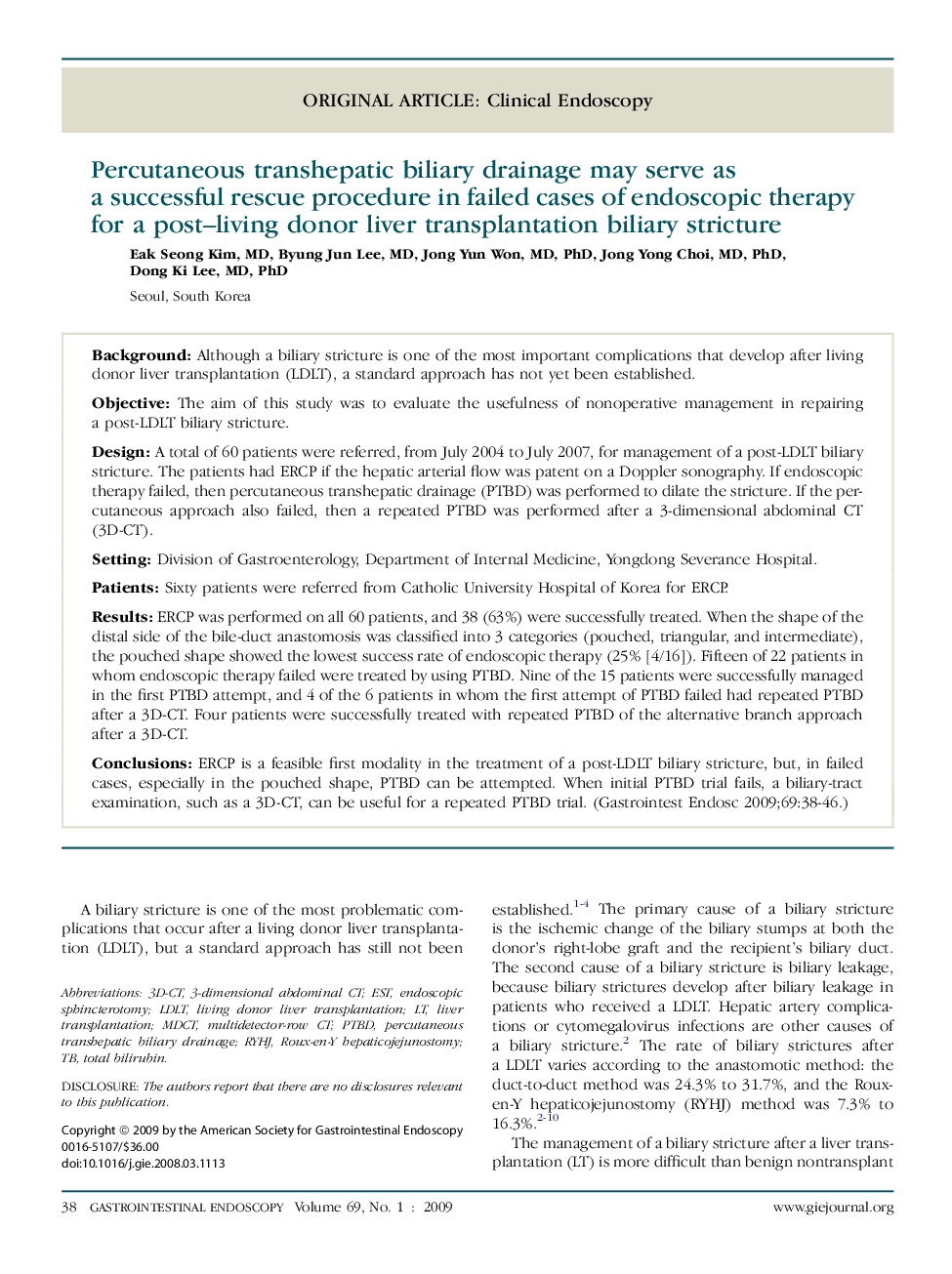| کد مقاله | کد نشریه | سال انتشار | مقاله انگلیسی | نسخه تمام متن |
|---|---|---|---|---|
| 3307897 | 1210392 | 2009 | 9 صفحه PDF | دانلود رایگان |

BackgroundAlthough a biliary stricture is one of the most important complications that develop after living donor liver transplantation (LDLT), a standard approach has not yet been established.ObjectiveThe aim of this study was to evaluate the usefulness of nonoperative management in repairing a post-LDLT biliary stricture.DesignA total of 60 patients were referred, from July 2004 to July 2007, for management of a post-LDLT biliary stricture. The patients had ERCP if the hepatic arterial flow was patent on a Doppler sonography. If endoscopic therapy failed, then percutaneous transhepatic drainage (PTBD) was performed to dilate the stricture. If the percutaneous approach also failed, then a repeated PTBD was performed after a 3-dimensional abdominal CT (3D-CT).SettingDivision of Gastroenterology, Department of Internal Medicine, Yongdong Severance Hospital.PatientsSixty patients were referred from Catholic University Hospital of Korea for ERCP.ResultsERCP was performed on all 60 patients, and 38 (63%) were successfully treated. When the shape of the distal side of the bile-duct anastomosis was classified into 3 categories (pouched, triangular, and intermediate), the pouched shape showed the lowest success rate of endoscopic therapy (25% [4/16]). Fifteen of 22 patients in whom endoscopic therapy failed were treated by using PTBD. Nine of the 15 patients were successfully managed in the first PTBD attempt, and 4 of the 6 patients in whom the first attempt of PTBD failed had repeated PTBD after a 3D-CT. Four patients were successfully treated with repeated PTBD of the alternative branch approach after a 3D-CT.ConclusionsERCP is a feasible first modality in the treatment of a post-LDLT biliary stricture, but, in failed cases, especially in the pouched shape, PTBD can be attempted. When initial PTBD trial fails, a biliary-tract examination, such as a 3D-CT, can be useful for a repeated PTBD trial.
Journal: Gastrointestinal Endoscopy - Volume 69, Issue 1, January 2009, Pages 38–46